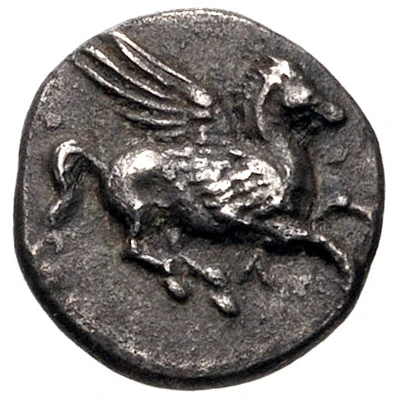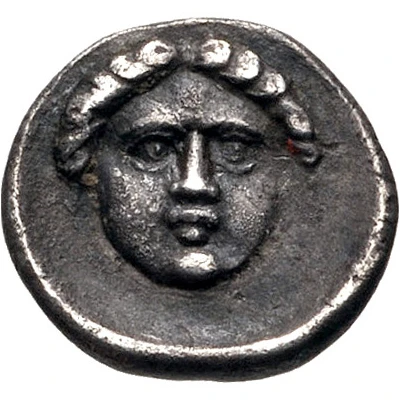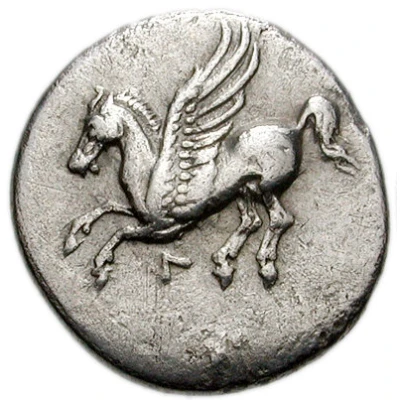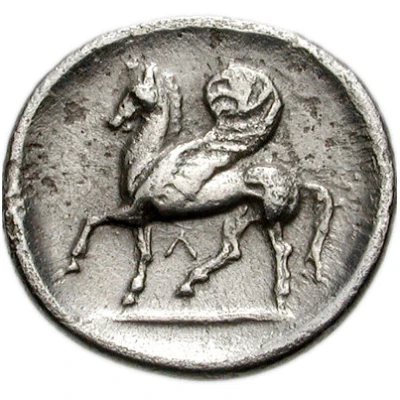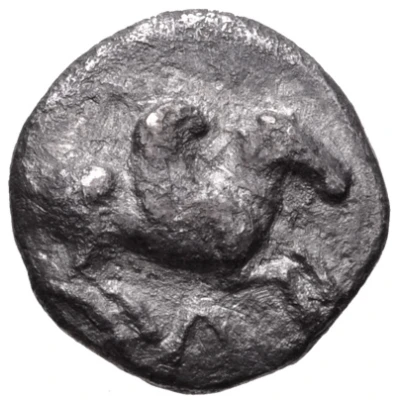
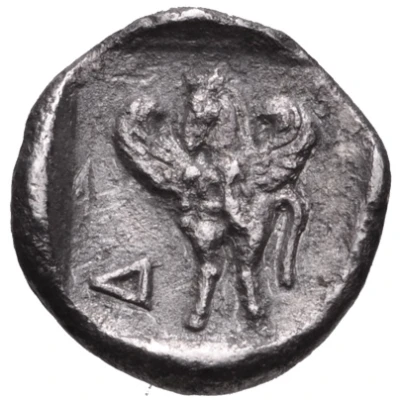

© Classical Numismatic Group, Inc.
Diobol 440 BC - 400 BC
| Silver | 0.82 g | 11.0 mm |
| Issuer | Leukas (Akarnania) |
|---|---|
| Type | Standard circulation coin |
| Years | 440 BC - 400 BC |
| Value | Diobol (⅓) |
| Currency | Corinthian drachm |
| Composition | Silver |
| Weight | 0.82 g |
| Diameter | 11.0 mm |
| Shape | Round (irregular) |
| Technique | Hammered, Incuse |
| Demonetized | Yes |
| Updated | 2024-10-09 |
| Numista | N#143922 |
|---|---|
| Rarity index | 100% |
Reverse
Pegasus rearing facing, turned slightly to left. Letters Δ-IO around. All within incuse square
Script: Greek
Interesting fact
The Diobol coin was used as a form of currency in ancient Greece, specifically in the city-state of Leukas (Akarnania) during the 5th century BC. The coin features an image of a dolphin on one side and a wheel on the other, which symbolizes the city's maritime trade and commerce. The use of dolphins as a symbol of currency was not uncommon in ancient Greece, as dolphins were considered sacred animals and represented good luck and prosperity.
